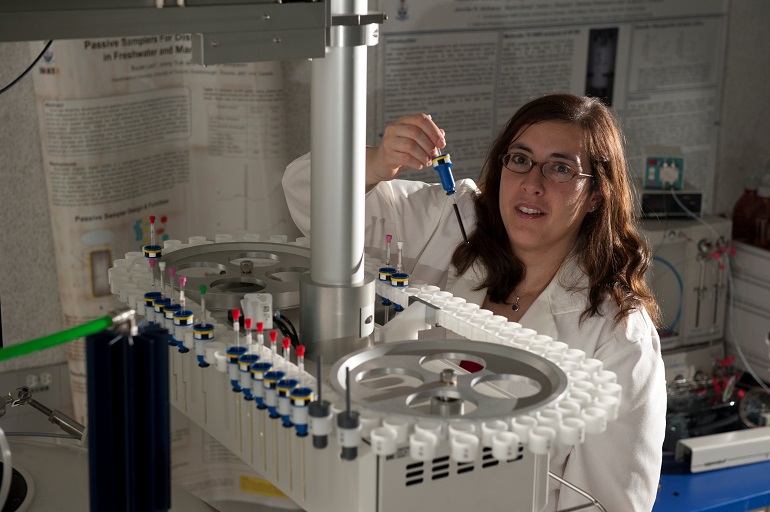Environmental Metabolomics: The new ‘Canary in the Coal Mine’ for Environmental Monitoring?
February 5, 2015
Myrna Simpson
Monitoring environmental health and organism stress is challenging but an important step towards the protection and long-term sustainability of our environment. Contaminant levels in soil and their potential risk to living organisms is based on total extractable contaminant levels which may or may not be reflective of toxicity and bioavailability. Similarly, water resources are also precious and rapid monitoring of wastewater effluent and natural water bodies is also desperately needed. However, current methods are time consuming, resource intensive and typically more qualitative in nature. Furthermore, these methods cannot examine sub-lethal organism stress and most endpoints focus on lethal exposure. Metabolomics is the newest of the “omics” tools and was developed in medicine for the rapid screening of diseases and genetic modifications but has the potential to reshape environmental monitoring programs. Metabolomics is sensitive, rapid and quantitative to subtle changes to any organism with environmental perturbations (nutrient stress, contaminant toxicity, etc). The long-term goal of this research is to develop rapid and quantitative methods for the accurate and quantitative assessment of environmental health before an ecosystem has declined to the point where it cannot recover.
Bio
Dr Myrna Simpson is Professor of Environmental Chemistry and serves as the Associate Chair Research in the Department of Physical and Environmental Sciences at the University of Toronto Scarborough. She is also the Associate Director of the Environmental Nuclear Magnetic Resonance (NMR) Centre. Myrna received a BSc in Chemistry and Mathematical Sciences and a PhD in Environmental Soil Chemistry from the University of Alberta. She completed a postdoctoral fellowship at Ohio State University before joining the University of Toronto Scarborough in 2002.
